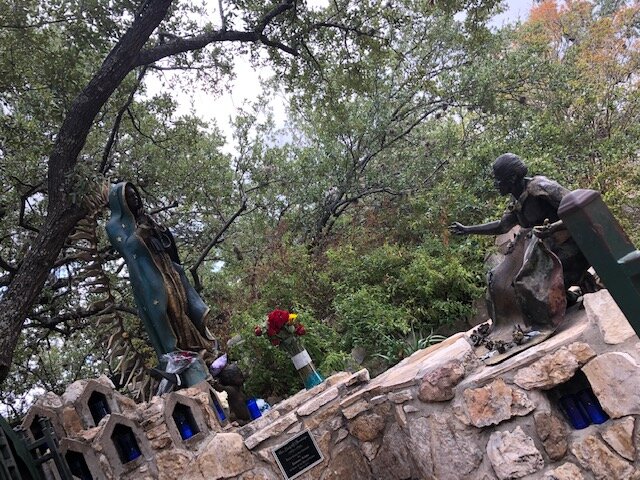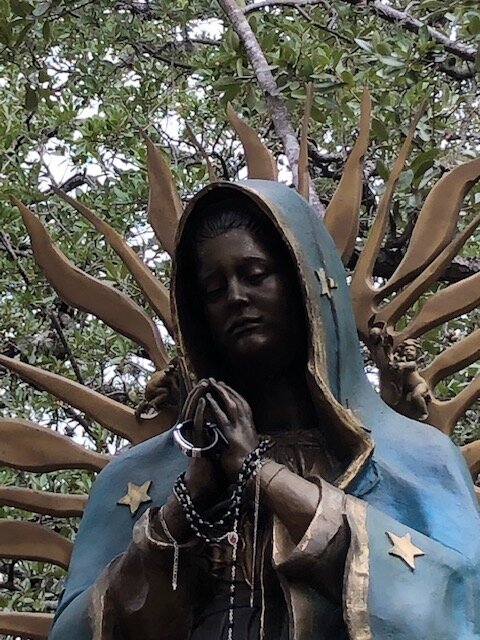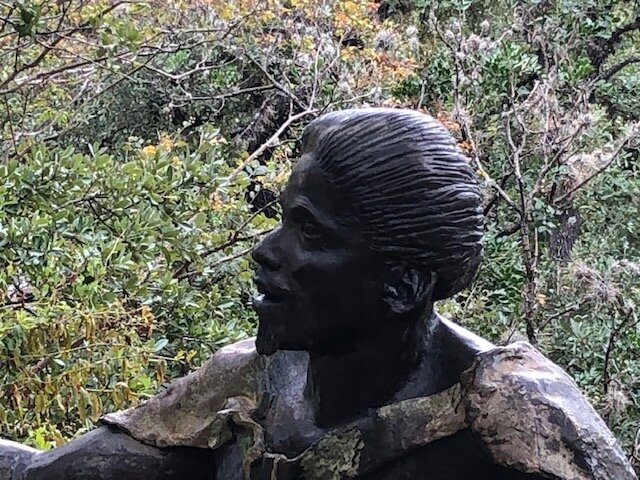This afternoon, I had a little over an hour to spend as I’d like. Of late, having a bit of free time anywhere in the middle of the week is a rarity, but that’s especially true while on the campus of a retreat center. Here at Oblate, the images of Our Lady of Guadalupe and Juan Diego drew me in. As I made my way up the stone steps with a senior colleague, memories of my field work at Dolores Mission Parish and the relationships with some of the women parishioners I was blessed to be a part of and to begin to sustain came back. As the women of the parish—all Latina, most of them mothers, some of them grandmothers—shared with me about their relationships with la Virgencita, I had the privilege of hearing stories about hope, resilience, and faithful resistance against forces that would deny the neighborhood and its residents the fullness of their dignity. They introduced me to a Guadalupe who loved fiercely, who saw Juan Diego—in his Brown-ness, in his economic poverty, in the fullness of his faith—who pointed to something more than the unjust circumstances that marked his day.
I am grateful to the women of Dolores Mission for sharing their faith with me, especially as they walk with Guadalupe. The conversations we shared and the witness they offer remind me over and over again that we are not alone, that God wants more for us than the world as it is has on offer. And they taught me about the role of grief in this process, about how important it is not to weep alone, especially during times of great loss.
The times we live in call for such outcries of grief. With our migrant siblings fleeing persecution, seeking asylum in this country, being separated from their families, suffering in detention, dying early and unjust deaths, I am reminded of the example of Mary of Nazareth. I imagine that she wept bitterly at the death of her son, a faithful Jewish man who preached a world to come in which justice would shine like the sun and all would have new life. His was an early and unjust death, brought about by the hands of the state and religious authorities.
The Gospels and Acts tell us little about Mary’s life after Jesus’ death and ascension. John’s Gospel introduces the image of her and the Beloved Disciple, standing at the foot of the cross as Jesus unites them in the bond of mother and son. Many artistic renditions of the Pentecost event depict her as present. Using my spiritual imagination, I’d like to believe that she was drawing near to those who loved her son, that she was grieving in community, that she was celebrating his life and carrying forward his legacy in the stories they told and in the radically egalitarian way they lived.
What might it look like for us to follow in Mary’s footsteps? This must have something to do with those who are most intimately affected by the unjust policies the current Administration has enacted against our migrant siblings. Let us listen to their stories. Let us grieve these injustices. And let us act in a way that witnesses to hope, to resilience, to faithful resistance against the forces that would deny them the fullness of their dignity.





